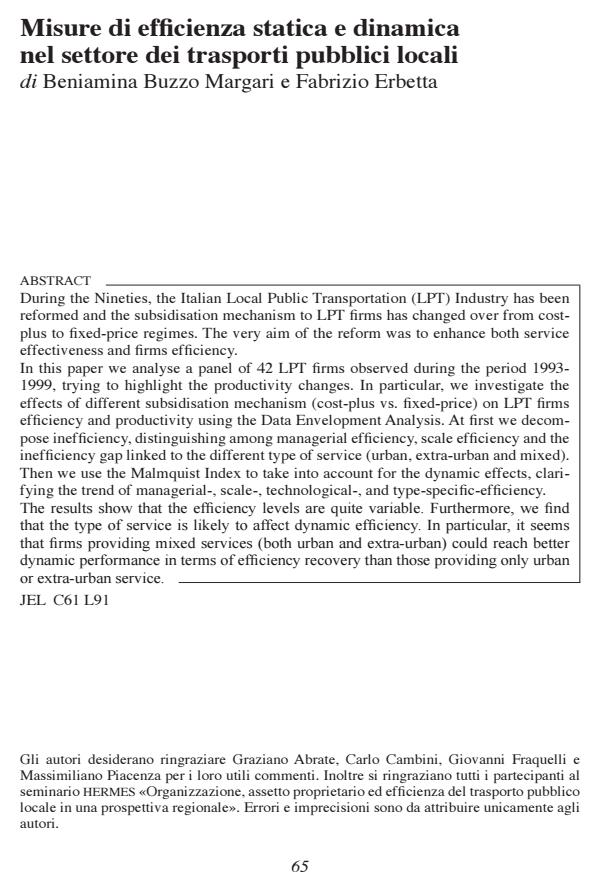Misure di efficienza statica e dinamica nel settore dei trasporti publici locali
Titolo Rivista ECONOMIA PUBBLICA
Autori/Curatori Beniamina Buzzo Margari, Fabrizio Erbetta
Anno di pubblicazione 2006 Fascicolo 2006/5-6 Lingua Italiano
Numero pagine 32 P. 65-96 Dimensione file 603 KB
DOI
Il DOI è il codice a barre della proprietà intellettuale: per saperne di più
clicca qui
Qui sotto puoi vedere in anteprima la prima pagina di questo articolo.
Se questo articolo ti interessa, lo puoi acquistare (e scaricare in formato pdf) seguendo le facili indicazioni per acquistare il download credit. Acquista Download Credits per scaricare questo Articolo in formato PDF

FrancoAngeli è membro della Publishers International Linking Association, Inc (PILA)associazione indipendente e non profit per facilitare (attraverso i servizi tecnologici implementati da CrossRef.org) l’accesso degli studiosi ai contenuti digitali nelle pubblicazioni professionali e scientifiche
During the Nineties, the Italian Local Public Transportation (LPT) Industry has been reformed and the subsidisation mechanism to LPT firms has changed over from costplus to fixed-price regimes. The very aim of the reform was to enhance both service effectiveness and firms efficiency. In this paper we analyse a panel of 42 LPT firms observed during the period 1993- 1999, trying to highlight the productivity changes. In particular, we investigate the effects of different subsidisation mechanism (cost-plus vs. fixed-price) on LPT firms efficiency and productivity using the Data Envelopment Analysis. At first we decompose inefficiency, distinguishing among managerial efficiency, scale efficiency and the inefficiency gap linked to the different type of service (urban, extra-urban and mixed). Then we use the Malmquist Index to take into account for the dynamic effects, clarifying the trend of managerial-, scale-, technological-, and type-specific-efficiency. The results show that the efficiency levels are quite variable. Furthermore, we find that the type of service is likely to affect dynamic efficiency. In particular, it seems that firms providing mixed services (both urban and extra-urban) could reach better dynamic performance in terms of efficiency recovery than those providing only urban or extra-urban service.;
Beniamina Buzzo Margari, Fabrizio Erbetta, Misure di efficienza statica e dinamica nel settore dei trasporti publici locali in "ECONOMIA PUBBLICA " 5-6/2006, pp 65-96, DOI: